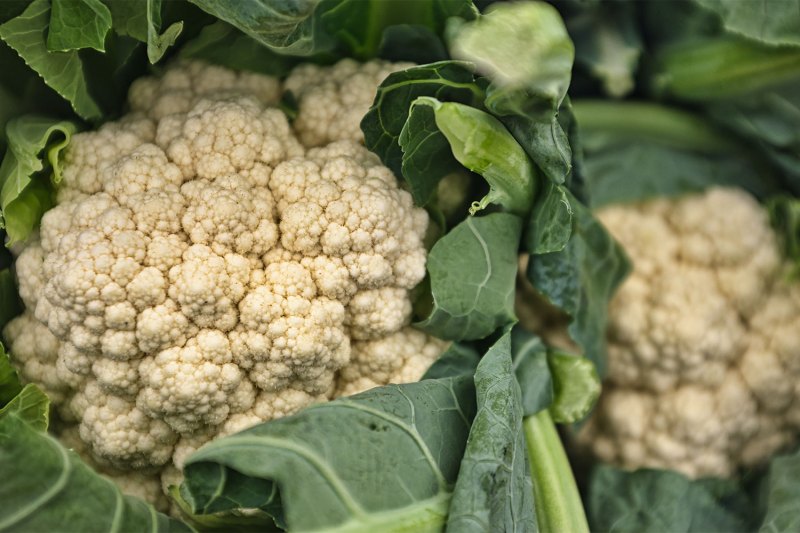Cauliflower has been broccoli’s unsexy neighbor next door for too long now. It’s high time the vegetable got the credit and began drawing the appeal it deserves.
The merits of cauliflower are many. For starters, it has tremendous texture, made all the better through a good oven roast. The flavor is unique and mild, with just the right nudge of subtle spice. And cauliflower is cheap and plentiful, an ever-easy grab at the grocery store no matter what season you’re in.
Reportedly, there are 80-some species of cauliflower in North America. We’re used to seeing a pretty standard version but there are others with even more intrigue, like green cauliflower, aka Romanesco. The name hails from old Italian, an adaptation of a word that translates to “cabbage flower.” The greens are often discarded but are in fact edible and just about as tasty as the white florets, or curds, we typically eat.

The gluten-free movement over the last decade has seen a sharp rise in cauliflower plantings and popularity. The flesh can be used in place of rice and flour, hence the emergence of things like pizza made with cauliflower dough. Yet, we tend to still associate it with cold and stale trays of crudités, to be dipped liberally into a bowl of ranch dressing.
Cauliflower is so much more. It can add another dimension to your favorite curry or get pickled and plopped into your favorite Bloody Mary. Here are some more things to do with the stuff:
Roasted
Giving cauliflower the roast treatment might be the best way to go. Doing so browns and caramelizes the surface, creating a rich and even somewhat nutty flavor component. Plus, it takes basically zero culinary prowess. Simply set your oven to 400 degrees and throw some cut up cauliflower on a pan. Drizzle olive oil generously over the top and add some salt and pepper to taste.
If you want a little more weight and protein, sprinkle some parmesan cheese on just before you pull the sheet out of the oven. It only takes about twenty minutes and be sure to shake the sheet a couple of times throughout the process to even the roasting. If you’re in more of a rush, do the same on high broil.
Meat Substitute
Plant-based meats are all the rage., and cauliflower can play a big role in the movement, especially if you have a food processor. Try it with mushrooms and various herbs as a vegetarian ground beef of sorts (here’s a fine recipe). It works great on taco night and, for more variety, change up the herb and spice profile (try basil, oregano, tarragon, and garlic) and use the end product in a pasta with marinara.
Another great use is as a steak substitute. Plugging in cauliflower is a healthy and crafty way to limit your red meat consumption, should you feel inspired to do so. You can cut out big slabs of the florets and grill them like you would a T-bone, dressed with a little olive oil and some herbs.
Romanesco
The Italian version of cauliflower is dazzling. Don’t bother cutting the stuff up as you’ll want to maintain the mesmerizing shape and texture for presentation purposes. Cooking Romanesco could not be easier. Simply steam or boil in shallow water until tender and then add lemon juice, salt, and capers. It’s also fantastic pickled with a bit of garlic. It’s a great side dish but also substantial enough to be the main event if you’re going healthy. Try it with a zippy white wine like an Italian Pinot Grigio or Albariño.
Soup
As fall fully settles, soup becomes all the more intriguing. A creamy cauliflower soup is a great option, at once thawing and comforting. It’s best with roasted cauliflower, so do that first and then throw it in the slow cooker with any number of your favorite vegetables (we suggest carrots, onions, and peas) some broth and butter and let it meld. If you want cauliflower to be the backbone of the soup, puree it with the other vegetables after they all simmer together on the stove before transferring to a pot or slow cooker. It’s great for dipping when you get to the bottom of the bowl so make sure you have a piece of baguette handy.


